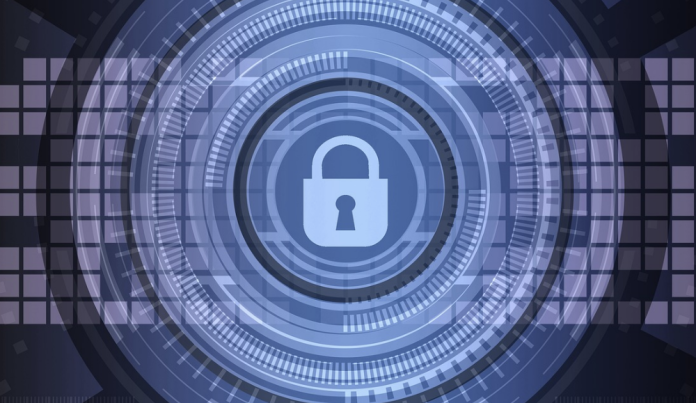The implementation of data privacy and protection can be a convoluted process. With multiple things to consider, organizations are often faced with a multi-phase process to determine what is already in place, what security holes need to be closed, and finally the implementation of new practices. To simplify the process, we have taken a deep dive into these pain points, the five best practices, and tips for implementation to make the process as seamless and efficient as possible.
How to start implementing data privacy and protection protocols
- Conduct an audit of existing solutions and practices
- Understand how and why these solutions and practices work
- Evaluate existing strengths and weaknesses leading to security holes
Once decision-makers have a deep understanding of their existing security posture, they are able to best evaluate the next steps. These steps should complement the existing strengths within the organization’s security infrastructure, as well as address the weaknesses that are leading to vulnerabilities within the business.
Five Best Practices to Implement for Data Privacy and Protection
#1 Access Control Audit
After businesses understand the ins and outs of their existing security protocols, they should also move on to understanding the ins and outs of who has access to what. Unfortunately, it is quite common for employees to have inflated access privileges. This may be due inaccurate rights being given at the time of hire, or perhaps access needed to be granted for a particular job duty that is no longer their responsibility. By getting a firm grasp on employee access controls, management is able to remove any unnecessary access rights.
Doing so, helps to reduce the threat of information being shared across an organization that may not be applicable or appropriate for all employees to have access to. Furthermore, the more access rights a user has, the more information can be infiltrated through that device in a cyber attack were to occur.
#2 Employee Training
We all know, humans are the weakest link when it comes to data privacy and protection. According to Verizon’s 2022 Data Breaches Investigations Report, 82% of data breaches involved a human element. Given we are all humans and humans make mistakes, there is no foolproof way to eliminate this risk. However, businesses can mitigate it with proper cybersecurity training.
Unless employees work in IT or the cyber division of a company, online threats are likely one of the last things on their minds. They also rarely understand the growing threats and ways to spot a potential malicious attack. By educating employees on emerging cyber threats, how they are executed, and the red flags to spot them, organizations can fully equip their staff with the proper tools to avoid falling victim.
#3 Capitalize on Existing Software and Practices
Once organizations understand the security holes that are in place, they can properly close them. Oftentimes, these holes can be closed by properly utilizing the features within existing software applications. A great example of this would be enabling two-factor authentication within the various apps that already support the feature. By turning this feature on, staff members will be required to provide two forms of verification before access being granted. This may be a password along with a SMS code, or biometric scans with a passcode. This effectively elevates data privacy and protection because if a single credential is compromised, malicious activity is still prohibited as two means of authentication are required.
Additional enhancements to existing practices can also bolster security best practices. Many organizations require employees to change their passwords; however, the frequency and controls behind these passwords are often lackluster. By formulating a password practice that is clearly outlined with frequency as password standards, employees will better understand the exact expectations. A significant element of this is reducing the ability for employees to repurpose old passwords, and using a password that is for work purposes only. Far too often employees will use the same password for personal and professional uses, and the “core” of the password always remains the same. For example a password of Password!1 will meet the capital, lowercase, numerical and special character requirements of most password checkers. However, it is quite predictable. Even more troublesome is when that password expires the user goes to Password!2. There is logic that can often be enabled within programs that prevent passwords from including certain phrases like “password” or monitor the previous passwords of the employee to ensure they aren’t recycling previously used credentials.
#4 Proactive Cybersecurity Solutions
Depending on the results of the security infrastructure audit, the business may need to invest in a proactive form of cybersecurity solutions. Over the years, many security solutions have advanced with the integration of machine learning and artificial intelligence. These methodologies allow automation to scan for potentially malicious content before it is accessed, detect when potential malicious behavior is occurring on the network, and take the appropriate steps to mitigate the damage.
Taking it a step further, The National Institute of Standards and Technology has encouraged businesses to integrate a zero-trust architecture into its cyber security framework. Essentially, this means that nothing is to be inherently trusted to connect or run on the network. In order for hardware or software to be used, it first must be verified as safe and secure. This architecture completely goes against traditional, reactive security approaches. As cyber threats have continued to evolve and morph to avoid detection, NIST identified a plan that goes a bit against the grain. However, because the software and hardware must first be proven safe before executing, this proactive approach has proven to be incredibly successful in enhancing data privacy and protection.
#5 Timely and Accurate Backup Files
When an organization suffers from a cyber incident, ensuring all of the data is backed up will be vital to maximize uptime. Additionally, keeping these backups secure and protected will also be imperative. Backup data should always be stored in two locations, and fully encrypted while in transit and at rest. This means that if anyone attempts to exploit the backup files they will be digitally encrypted to prevent the plain text from being legible, therefore keeping data private and secure.
As best practice, many organizations opt to automate their backup process. This allows for peace of mind knowing someone is not forgetting to backup their data. However, as an additional step, backups should always be spot checked to ensure the automated process is executing as expected.
How Does This Implementation Impact the Company Culture?
Anytime changes take place, or employees are asked to do something that may interfere with their daily activities, it may be met with resistance. Yet, businesses should not let this deter them. The reality is, cyber crime is a very lucrative business and no organization is immune from these threats. By encouraging employees to adopt new practices and advanced utilization of proactive software, it will soon become second nature for staff members and will increase the overall data privacy and protection within the business. To mitigate the resistance business owners can implement the following:
Educate Staff Members of the Why
When employees understand why adoptions of new technologies and practices are being adopted, they are less resistant to adhering to them. This means educating them on existing cyber threats and, if successfully executed on the company network, the harm that would do.
Close Loop-Holes
Depending on the new processes and technologies being utilized, there may be opportunities for staff members to find loop-holes to reduce the friction some of these new things may entail. For instance, multi-factor authentication may be seen as an annoyance for some. The zero-trust framework may also prevent their personal devices from connecting to the corporate network. Yes, this may cause friction, but it is necessary to implement for data privacy and protection.
Businesses must identify and close the potential loop-holes before they can potentially be exploited.
Consider the User Experience
When new policies are created and advanced solutions are integrated, it is important to understand the user experience. Finding the right solution and process implementation to reduce hindrances within the user experience will minimize employee push-back. Businesses also should discover the best way to deploy these with minimal downtime for staff members.
Offer Incentives
Depending on the new processes in place, the objectives to earn incentives may vary. However, as a basic example, some employee cybersecurity training programs offer continued testing throughout the year. If employees pass these tests consistently, offering them some form of perk helps to keep company morale high.
Conclusion
Change can be difficult. Humans are creatures of habits, and when asked to change those habits it can be rather difficult. However, as cybersecurity threats continue to rise it is important organizations adapt their strategies to properly thwart these growing threats. To strengthen a business’ digital infrastructure they must understand their current strengths and weaknesses. From there, they can properly formulate a plan to mitigate risks by closing the security holes they have identified. Hopefully, the five best practices outlined above will help reduce the risks and close the gaps many organizations face today.






